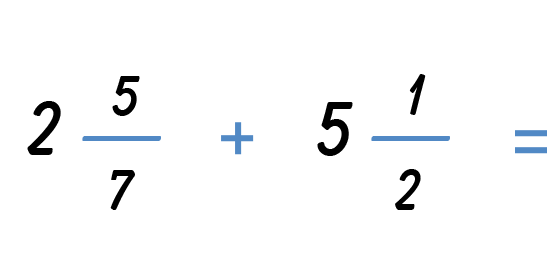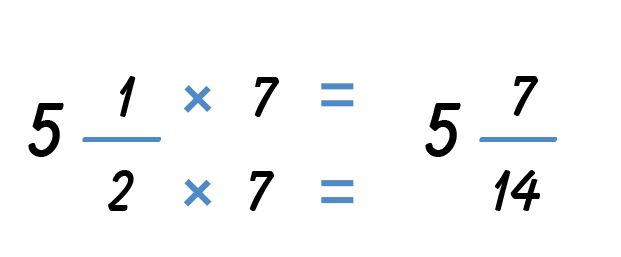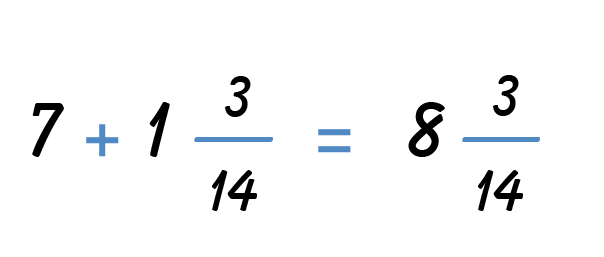Getting Started
Consider the problem:

You need a common denominator to add the fractions. Use the LCM to find the LCD, lowest common denominator of the two mixed fractions. Recall that the LCM is the smallest multiple that both numbers have in common.
To identify the LCM, list the multiples of each number
until you find a common multiple, like this:
Multiples of 2: 2, 4, 6, 8, 10, 12,
14
Multiples of 7: 7, 14
The LCM of 2 and 7 is 14, which means that the LCD is 14.







